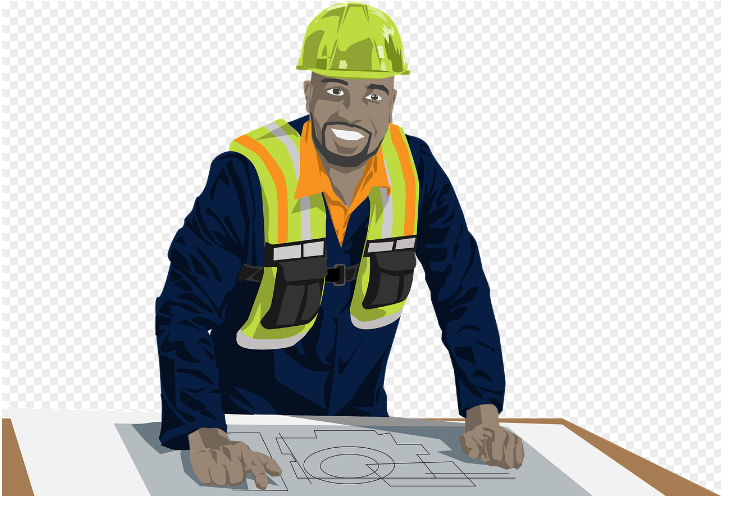In recent years, the field of artificial intelligence (AI) has expanded rapidly, with numerous companies striving to develop innovative solutions across various domains. TriStar AI is one such company making significant strides in the realm of computer vision, and the role of a Junior Computer Vision Engineer at TriStar AI offers an exciting opportunity for aspiring professionals in this dynamic field. This article will delve into the responsibilities, skills, and potential career trajectory of a Junior Computer Vision Engineer, alongside an exploration of TriStar AI’s contributions to the industry.
Understanding Computer Vision
Before discussing the specific role tristar ai junior computer vision engineer it’s essential to understand what computer vision entails. Computer vision is a subfield of artificial intelligence that focuses on enabling machines to interpret and understand visual information from the world. This involves developing algorithms and models that can process images and videos, recognizing patterns, objects, and even complex scenes.
Computer vision has applications across various industries, including healthcare (medical image analysis), automotive (autonomous vehicles), agriculture (crop monitoring), and retail (inventory management). As technology evolves, the demand for skilled professionals who can develop and improve computer vision systems continues to grow.
The Role of a Junior Computer Vision Engineer
As a Junior Computer Vision Engineer at TriStar AI, individuals will work alongside a team of experienced engineers and researchers to develop innovative solutions using computer vision techniques. The primary responsibilities of this role may include:
1. Algorithm Development
Junior Computer Vision Engineers are involved in developing and refining algorithms that enable machines to interpret visual data. This may include tasks like image segmentation, object detection, and feature extraction. Engineers will collaborate with senior team members to design algorithms that meet the specific needs of various projects.
2. Data Collection and Annotation
To train and evaluate computer vision models, a substantial amount of data is required. Junior engineers may be tasked with collecting, curating, and annotating datasets for training purposes. This involves ensuring the data is diverse and representative, which is crucial for building robust models.
3. Model Training and Evaluation
Once datasets are prepared, Junior Computer Vision Engineers will assist in training machine learning models using frameworks such as TensorFlow or PyTorch. They will also evaluate model performance by analyzing metrics such as accuracy, precision, and recall, identifying areas for improvement.
4. Collaboration and Communication
Teamwork is vital in any engineering role, and Junior Computer Vision Engineers at TriStar AI will work closely with cross-functional teams, including software developers, product managers, and data scientists. Effective communication skills are essential for conveying technical concepts to non-technical stakeholders and ensuring alignment on project goals.
5. Research and Continuous Learning
The field of computer vision is rapidly evolving, with new techniques and tools emerging regularly. Junior engineers are expected to stay up to date with the latest research and advancements in the field. This may involve reading academic papers, attending conferences, and experimenting with new algorithms and technologies.
Required Skills and Qualifications
To be considered for a tristar ai junior computer vision engineer Vision Engineer position at TriStar AI, candidates should possess a combination of technical skills and educational qualifications. Key skills and qualifications include:
1. Educational Background
A bachelor’s degree in computer science, electrical engineering, or a related field is typically required for this role. Some companies may also consider candidates with equivalent experience or specialized training in computer vision or machine learning.
2. Programming Proficiency
Proficiency in programming languages such as Python, C++, or Java is essential for developing computer vision algorithms and implementing models. Python is particularly popular in the AI community due to its extensive libraries and frameworks for machine learning.
3. Understanding of Machine Learning and AI Concepts
A solid foundation in machine learning principles, including supervised and unsupervised learning, neural networks, and deep learning, is crucial for success in this role. Familiarity with popular machine learning libraries such as TensorFlow, Keras, or PyTorch is highly desirable.
4. Experience with Computer Vision Libraries
Familiarity with computer vision libraries such as OpenCV, scikit-image, or DLIB is beneficial for developing and testing computer vision algorithms. Hands-on experience with these libraries can significantly enhance a candidate’s qualifications.
5. Problem-Solving Skills
The ability to approach complex problems with analytical thinking is vital for a Junior Computer Vision Engineer. Engineers should be able to identify issues, propose solutions, and iterate on designs based on feedback and results.
6. Team Collaboration and Communication Skills
As part of a collaborative environment, Junior Computer Vision Engineers should possess strong communication skills to articulate ideas and collaborate effectively with team members and stakeholders.
Career Trajectory
Starting as a Junior Computer Vision Engineer at TriStar AI can set the stage for a rewarding career in the field of artificial intelligence. The typical career trajectory may include the following stages:
1. Junior Engineer to Engineer
After gaining experience and demonstrating competence in computer vision projects, a Junior Engineer may advance to a mid-level Engineer position. This progression usually involves taking on more complex projects, leading smaller teams, and contributing to strategic decision-making.
2. Specialization in Computer Vision
Engineers may choose to specialize further in specific areas of computer vision, such as image processing, 3D vision, or autonomous systems. Specialization can lead to opportunities in research and development, where engineers can focus on cutting-edge technologies and innovations.
3. Senior Engineer or Lead Engineer
With continued experience and expertise, engineers can progress to senior roles, where they may lead projects, mentor junior staff, and influence the direction of technology development within the company.
4. Management and Leadership Roles
Eventually, skilled engineers may transition into management positions, overseeing teams and projects while guiding the strategic vision for the company’s computer vision initiatives. Roles such as Engineering Manager or Director of AI/Computer Vision can offer new challenges and responsibilities.
TriStar AI’s Impact on the Industry
TriStar AI has emerged as a key player in the artificial intelligence sector, particularly in the development of innovative computer vision solutions. The company focuses on harnessing the power of AI to address real-world challenges, making significant contributions across various sectors. Some of the notable aspects of TriStar AI’s impact include:
1. Cutting-Edge Research and Development
TriStar AI invests heavily in research and development to advance computer vision technologies. Their teams work on state-of-the-art algorithms that improve image recognition accuracy, enhance object detection capabilities, and enable real-time analysis of visual data.
2. Diverse Applications Across Industries
The company’s computer vision solutions have applications across multiple sectors, including healthcare, security, automotive, and retail. For example tristar ai junior computer vision engineer technology is used in medical imaging to assist radiologists in detecting anomalies, as well as in surveillance systems to enhance security measures.
3. Focus on Ethical AI Practices
TriStar AI is committed to ethical AI practices, ensuring that their technologies are developed and implemented responsibly. This includes addressing bias in algorithms and promoting transparency in AI systems, which is increasingly crucial in today’s society.
4. Collaboration with Educational Institutions
To foster talent and innovation, TriStar AI collaborates with universities and research institutions, supporting educational programs and initiatives in artificial intelligence and computer vision. This partnership helps bridge the gap between academia and industry, ensuring a skilled workforce for the future.
5. Community Engagement and Outreach
TriStar AI actively engages with the community to raise awareness about AI and its potential. They organize workshops, webinars, and hackathons to encourage interest in computer vision and inspire the next generation of engineers and researchers.
Conclusion
The role of a tristar ai junior computer vision engineer represents a unique opportunity to contribute to the rapidly evolving field of artificial intelligence. With a focus on algorithm development, data analysis, and collaboration, this position serves as a stepping stone for individuals aspiring to build a successful career in computer vision.
As technology continues to advance, the demand for skilled professionals in computer vision will only increase. Junior Computer Vision Engineers at TriStar AI will play a crucial role in shaping the future of AI applications across various industries. With the right skills, dedication, and a commitment to continuous learning, individuals can navigate a rewarding career path that influences the development of innovative solutions, ultimately transforming how machines understand and interact with the world around us.








Leave feedback about this